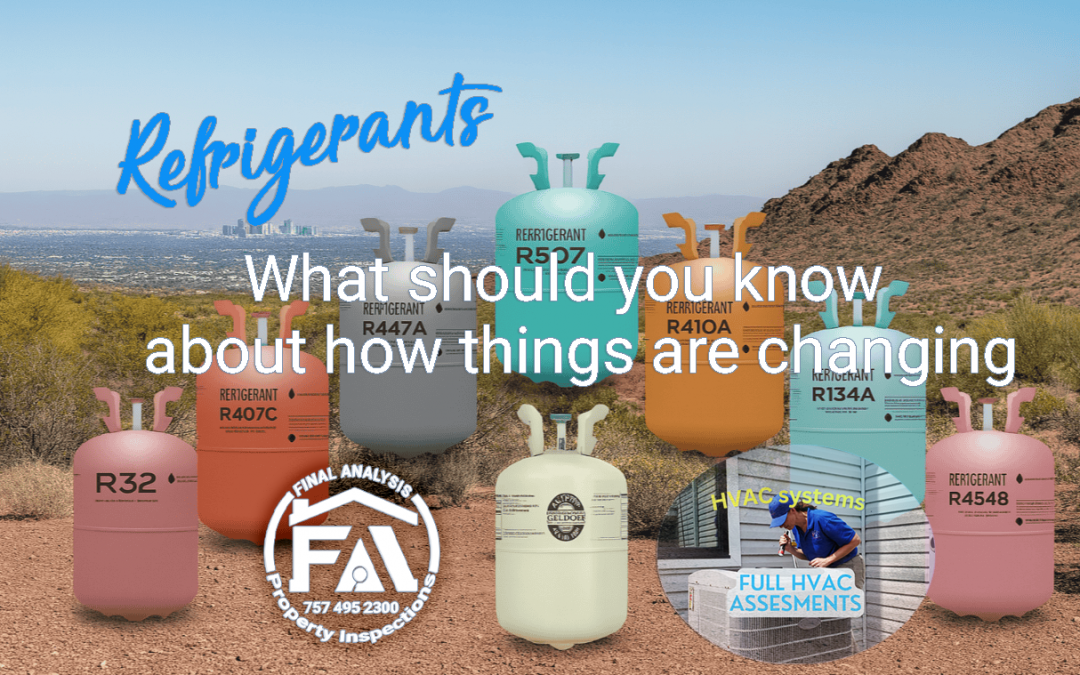If you own a home with central air conditioning or a heat pump, you may have heard about changes to the types of refrigerants used in these systems. Refrigerant is the chemical inside your system that absorbs heat from your home in the summer and releases it outdoors, and in the winter (for heat pumps), it works in reverse to bring warmth inside. Over the past few decades, the refrigerants allowed in residential systems have changed significantly. Here’s what homeowners should know and why it matters.
Why Are Refrigerants Changing?
Refrigerants are regulated because some types have been found to harm the environment. Older refrigerants either:
-
Depleted the ozone layer (CFCs and HCFCs), or
-
Contributed heavily to global warming (HFCs).
Government regulations, both in the U.S. and worldwide, have gradually phased out older refrigerants to protect the environment. This shift has led manufacturers and service providers to adopt newer, more environmentally friendly options.
The Evolution of Common Refrigerants
R-22 (Freon)
-
Used widely in systems built before 2010.
-
An HCFC that damages the ozone layer.
-
Production and import were banned in the U.S. starting in 2020.
-
Only recycled or reclaimed R-22 is still available, and it’s very expensive.
-
If your system still uses R-22, repairs can be costly, and replacement is often recommended.
R-410A (Puron)
-
The standard refrigerant for most systems from 2010 through the early 2020s.
-
Does not harm the ozone layer, but has a high global warming potential (GWP).
-
Still widely used today but is being phased out by the year 2036 under the new environmental rules.
R-32 and R-454B (The New Generation)
-
More environmentally friendly alternatives with much lower GWP.
-
Already being adopted in new equipment as manufacturers transition away from R-410A
-
Offer similar or improved performance and efficiency compared to older refrigerants.
What This Means for Homeowners
-
If Your System Uses R-22:
-
Parts and refrigerant are expensive and hard to find.
-
A breakdown often means it’s more cost-effective to replace the system.
-
-
If Your System Uses R-410A:
-
You’re in good shape for now.
-
Service and refrigerant are still readily available, but future systems will eventually use newer refrigerants.
-
-
If You’re Installing a New System:
-
Ask your HVAC contractor what refrigerant the equipment uses.
-
Choosing a system designed for R-32 or R-454B may help “future-proof” your investment.
-
-
Efficiency and Cost Savings:
-
New refrigerants often go hand-in-hand with more energy-efficient equipment.
-
Though the upfront cost may be higher, lower energy bills and fewer environmental concerns make it worthwhile in the long run.
-
The Bottom Line
Refrigerants are changing to protect the environment, but the shift also impacts homeowners. If your system is more than 10–15 years old, it may run on a refrigerant that’s outdated and expensive to maintain. Knowing what refrigerant your system uses—and planning ahead—can save you money and headaches when it comes time for repairs or replacement.
If you’re buying a home, selling one, or simply want peace of mind, an inspection can help identify what type of system you have and what refrigerant it uses. At Final Analysis Property Inspections, we make sure our clients understand these details so they can make informed decisions about their home.

